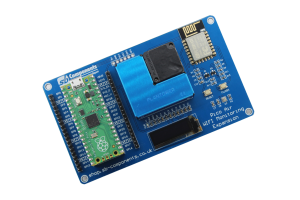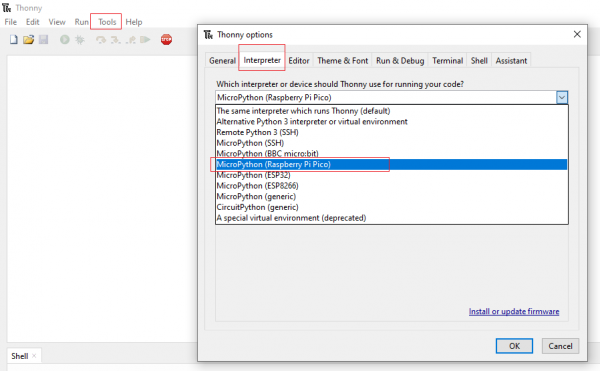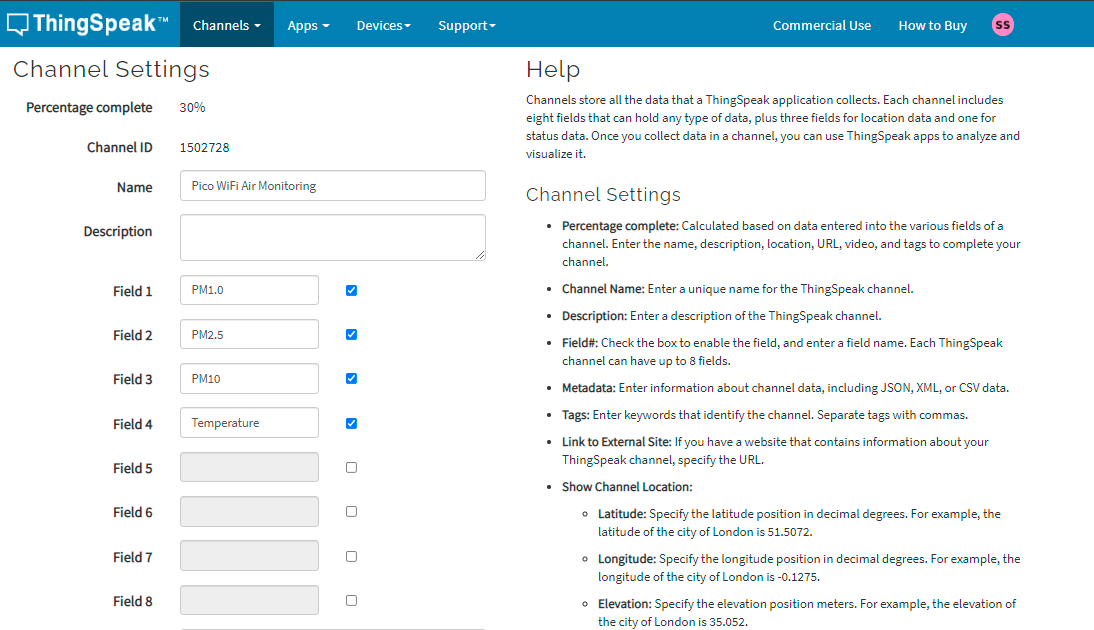Difference between revisions of "Pico-WiFi-Air-Monitoring"
From SB-Components Wiki
| (5 intermediate revisions by the same user not shown) | |||
| Line 1: | Line 1: | ||
<div class="row"> | <div class="row"> | ||
<div class="large-8 column"> | <div class="large-8 column"> | ||
| − | == Pico Air Monitoring Expansion == | + | == Pico Air WiFi Monitoring Expansion == |
| + | Pico Air WiFi Monitoring Expansion for Raspberry Pi Pico is an open-source portable sensor that has the ability to provide the level of quantity of the suspended particulates with their mass. Pico Air WiFi Monitoring Expansion works on operating voltage of 5V with a hi-tech Digital Laser Dust Sensor PMSA003, ESP8266, and Bosch BME280 with an on-board 0.91" OLED Display that provides the information of suspended particulate matter(PM1.0, PM2.5, PM10) in the air per unit volume via digital output. It communicates via UART(serial) with the standby current ≤200 Microampere(μA) of the sensor. | ||
=== Features === | === Features === | ||
| + | * PMSA003 Sensor | ||
| + | * 5V operating Voltage | ||
| + | * On-Board 0.91” OLED Display | ||
| + | * Standard Pico 40 Pins Header | ||
| + | * High-Quality Biosensor | ||
| + | * RoHS Compliance | ||
=== Specifications === | === Specifications === | ||
| + | * Model - Pico Air Wifi Monitoring Expansion | ||
| + | * Sensor Model - PMSA003 | ||
| + | * Wifi Module - ESP8266 | ||
| + | * Humidity Sensor - BME280 | ||
| + | * Communication Interface - UART(Serial) | ||
| + | * Display Type - 0.91' | ||
| + | * Type - Biosensor | ||
| + | * Board Dimension - 91x68 mm | ||
| + | * Measuring Range - 0.3 to 1.0; 1.0 to 2.5; 2.5 to 10 Micron (µm) | ||
| + | * Counting Efficiency - 50% @ 0.3 µm 98% @> = 0.5 µm | ||
| + | * Response Time - ≤10 sec | ||
| + | * DC supply Voltage - 5.0 V | ||
| + | * Operating Temperature Range - -10 to +60 Celsius | ||
</div> | </div> | ||
<div class="large-4 column"> | <div class="large-4 column"> | ||
| − | [[File: | + | [[File:Pico_air_Wifi_monitoring.png|thumb|left|alt=Pico Air Wifi Monitoring Expansion| Buy it From : ''[https://shop.sb-components.co.uk/products/pico-air-monitoring-expansion Click Here]'']] |
</div> | </div> | ||
</div> | </div> | ||
| Line 39: | Line 59: | ||
* To obtain the API key visit: https://thingspeak.com/ and register an account. | * To obtain the API key visit: https://thingspeak.com/ and register an account. | ||
| − | * create a channel by visiting My Channels-->New Channel then enable the fields as shown below and click on save channel button. | + | * create a channel by visiting My Channels-->New Channel then enable the fields as shown below and click on the save channel button. |
| − | |||
| − | * now click on API key tab and copy the API key and paste it in '''"Send_data_Thingspeak.py"''' as | + | [[File:Thinkspeak_channel_creation.PNG]] |
| + | |||
| + | * now click on the API key tab and copy the API key and paste it in '''"Send_data_Thingspeak.py"''' as mentioned above. | ||
* Now click on the green play button in thonny to run the code. | * Now click on the green play button in thonny to run the code. | ||
| − | * you can click on private view tab on your | + | * you can click on the private view tab on your thingspeak dashboard to monitor your pico wifi air monitoring data. |
== Resources == | == Resources == | ||
| + | |||
| + | * '''Github''' | ||
| + | |||
| + | [https://github.com/sbcshop/Pico-WiFi-Air-Monitoring-Expansion Source Code] | ||
| + | |||
| + | * '''Thingspeak''' | ||
| + | |||
| + | [https://thingspeak.com/ Thingspeak] | ||
Latest revision as of 07:37, 9 November 2021
Pico Air WiFi Monitoring Expansion
Pico Air WiFi Monitoring Expansion for Raspberry Pi Pico is an open-source portable sensor that has the ability to provide the level of quantity of the suspended particulates with their mass. Pico Air WiFi Monitoring Expansion works on operating voltage of 5V with a hi-tech Digital Laser Dust Sensor PMSA003, ESP8266, and Bosch BME280 with an on-board 0.91" OLED Display that provides the information of suspended particulate matter(PM1.0, PM2.5, PM10) in the air per unit volume via digital output. It communicates via UART(serial) with the standby current ≤200 Microampere(μA) of the sensor.
Features
- PMSA003 Sensor
- 5V operating Voltage
- On-Board 0.91” OLED Display
- Standard Pico 40 Pins Header
- High-Quality Biosensor
- RoHS Compliance
Specifications
- Model - Pico Air Wifi Monitoring Expansion
- Sensor Model - PMSA003
- Wifi Module - ESP8266
- Humidity Sensor - BME280
- Communication Interface - UART(Serial)
- Display Type - 0.91'
- Type - Biosensor
- Board Dimension - 91x68 mm
- Measuring Range - 0.3 to 1.0; 1.0 to 2.5; 2.5 to 10 Micron (µm)
- Counting Efficiency - 50% @ 0.3 µm 98% @> = 0.5 µm
- Response Time - ≤10 sec
- DC supply Voltage - 5.0 V
- Operating Temperature Range - -10 to +60 Celsius

Pinout
Installation
MicroPython
- Stack Raspberry Pi Pico on the female header of Pico Air Monitoring Expansion.
- Connect USB cable on Raspberry Pi Pico USB port.
- Choose interpreter as MicroPython (Raspberry Pi pico).
- Download Pico air monitoring expansion repository from the below link:
Source code: https://github.com/sbcshop/Pico-Air-Monitoring-Expansion
- open Thonny IDE and create 3 new files as "ssd1306.py" , "pmsa003.py" and "bme280.py" with the same content of the file you have downloaded from the above repository or you can also save these 3 files in raspberry pi pico from the file menu -> save as and select raspberry pi pico
- open "Send_data_Thingspeak.py" and edit the below lines:
WiFi_SSID='WiFi_SSID' # Wifi_SSID
WiFi_password = 'WiFi_Password' # WiFi Password
Port = '80' # Thingspeak port
API_KEY = "Thingspeak_Write_API"
- To obtain the API key visit: https://thingspeak.com/ and register an account.
- create a channel by visiting My Channels-->New Channel then enable the fields as shown below and click on the save channel button.
- now click on the API key tab and copy the API key and paste it in "Send_data_Thingspeak.py" as mentioned above.
- Now click on the green play button in thonny to run the code.
- you can click on the private view tab on your thingspeak dashboard to monitor your pico wifi air monitoring data.
Resources
- Github
- Thingspeak


